Abstract
In Experiment 1, pigeons were trained to peck keys with equal food-reinforcement schedules in components that ended with either noncontingent or contingent transitions to a third component with a five-fold richer schedule. Response rates were higher in the initial component with contingent transitions, but resistance to prefeeding or extinction was not consistently greater. Experiment 2 also included noncontingent or contingent transitions to a signaled period of nonreinforcement. There was no effect of the contingency on transitions to nonreinforcement, but the difference in response rates maintained by contingent versus noncontingent transitions to the richer schedule was replicated. In addition, response rates were higher in components that preceded nonreinforcement than in components that preceded the richer schedule. However, resistance to extinction was greater for noncontingent transitions to the richer schedule than to nonreinforcement, implicating stimulus–reinforcer relations in the determination of resistance to change. Resistance to change was also somewhat greater for noncontingent than for contingent transitions to the richer schedule. The latter result, together with the results of Experiment 1 and related research, suggests that response-contingent reinforcement does not increase resistance to change.
Keywords: response–reinforcer contingencies, stimulus–reinforcer contingencies, response rate, resistance to change, timeout, prefeeding, extinction, key peck, pigeons
Full text
PDF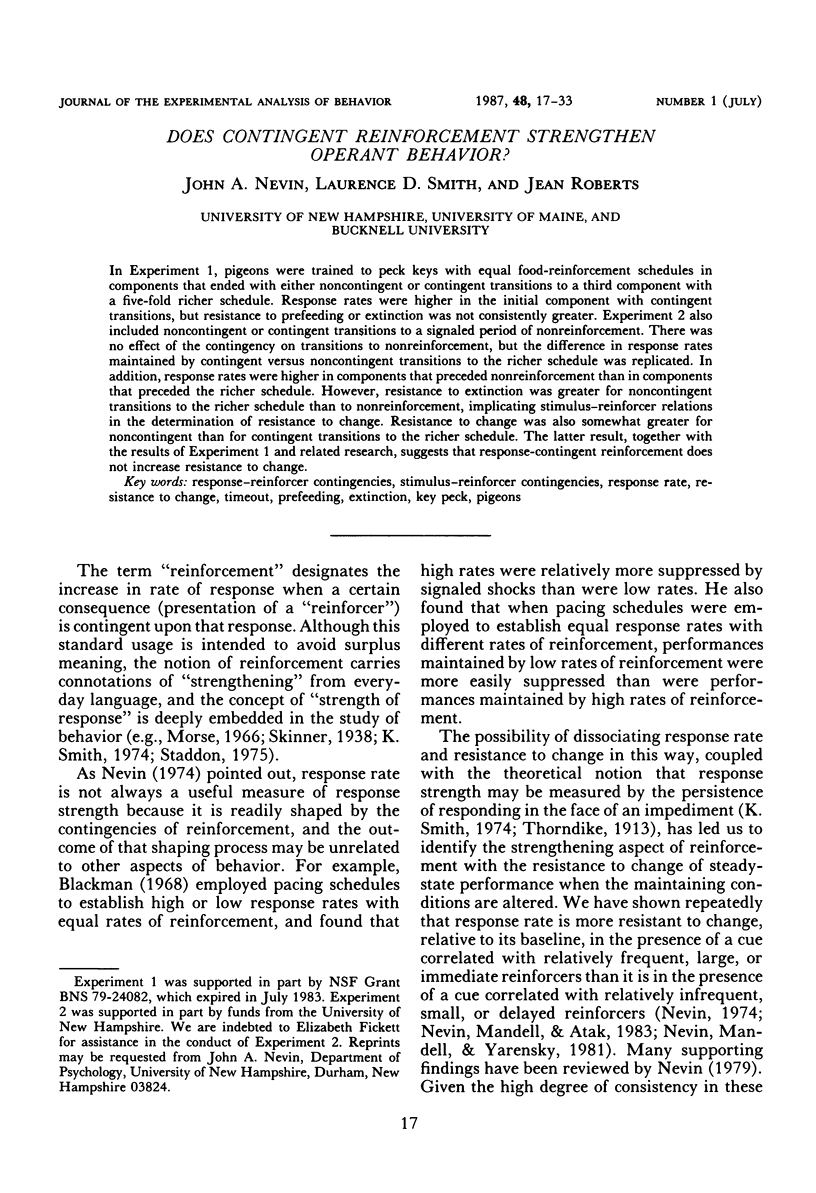
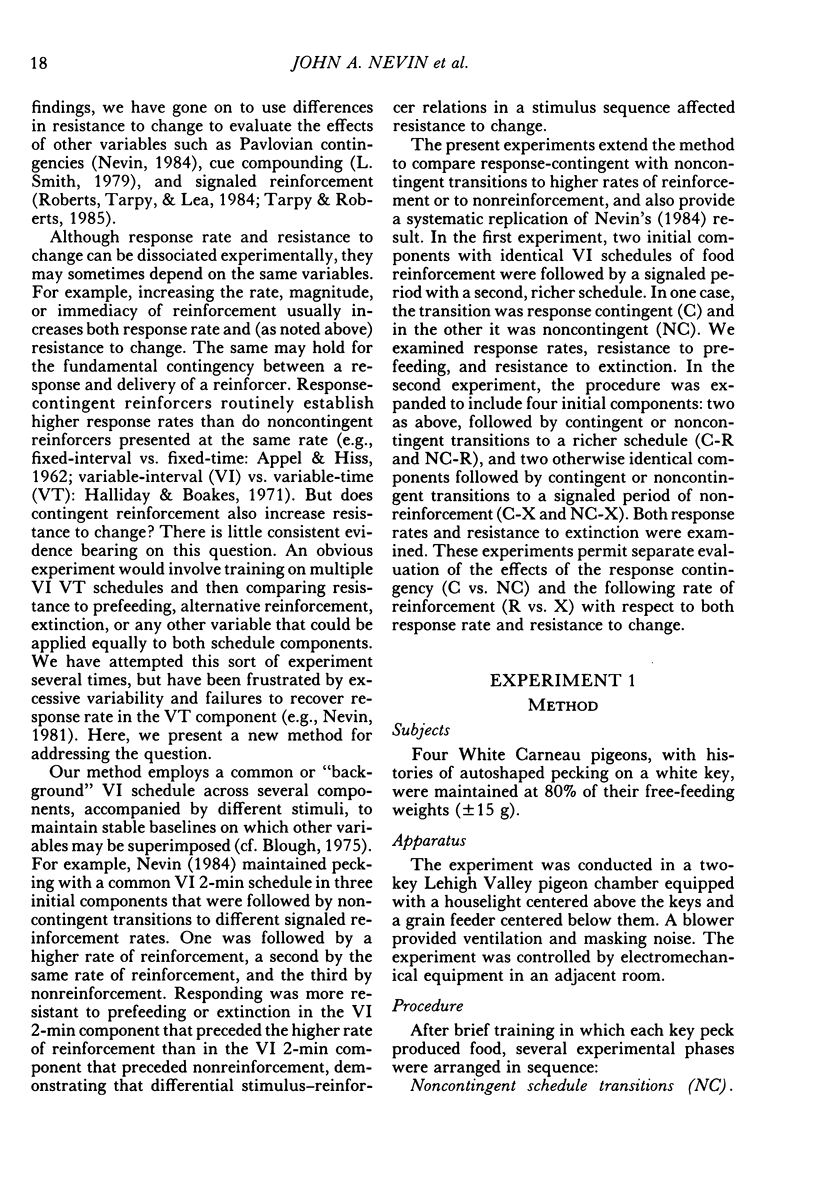
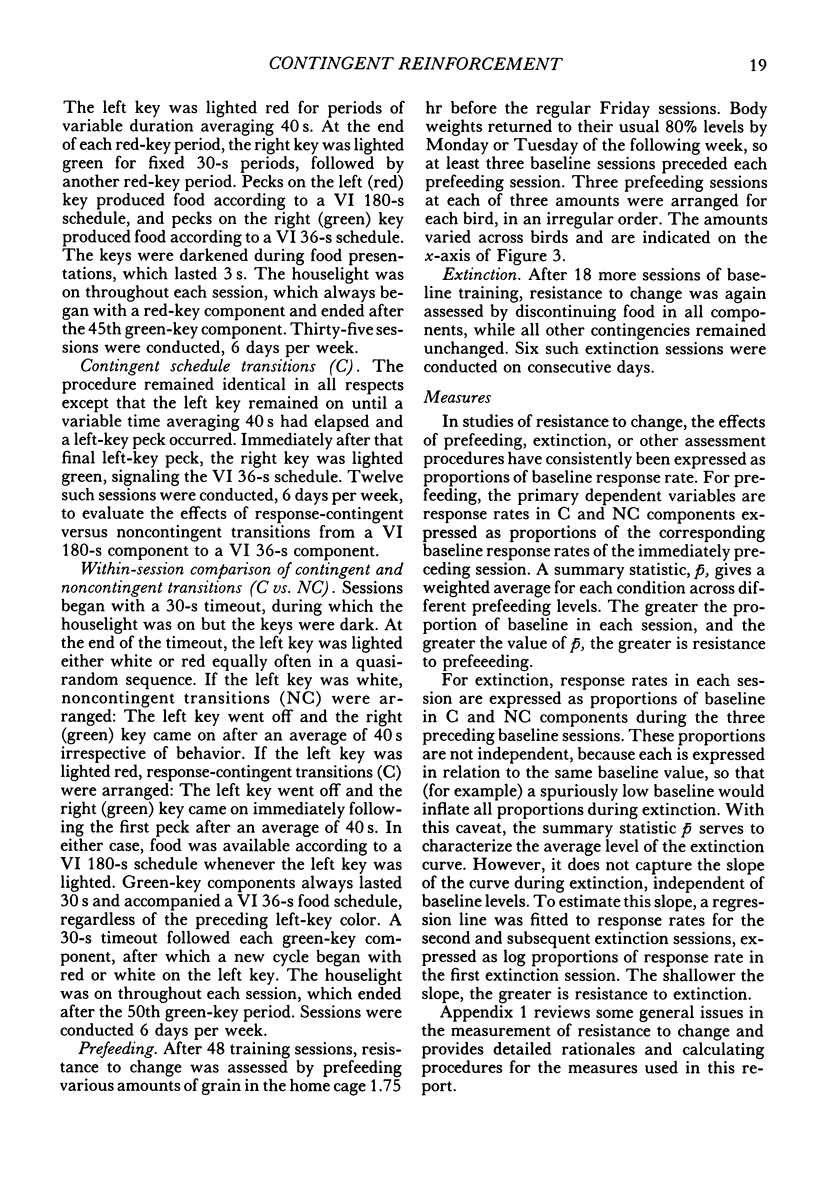
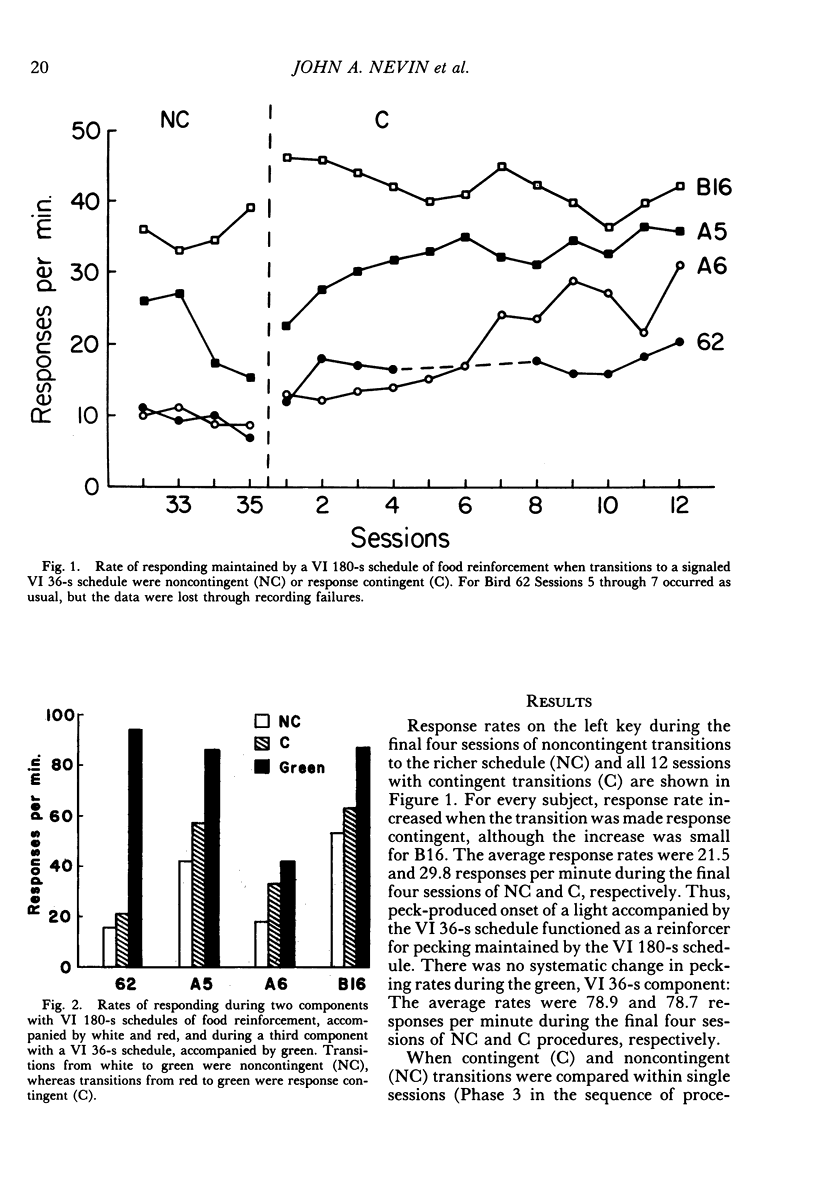
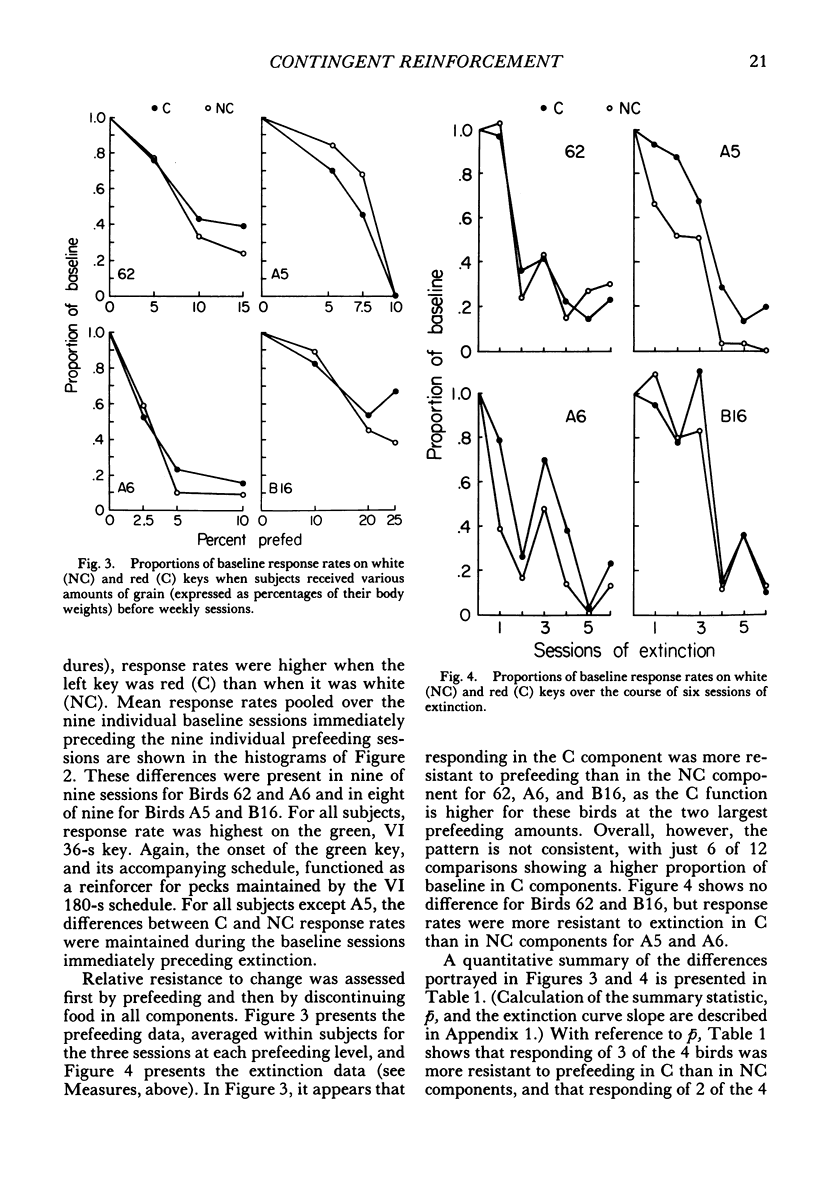
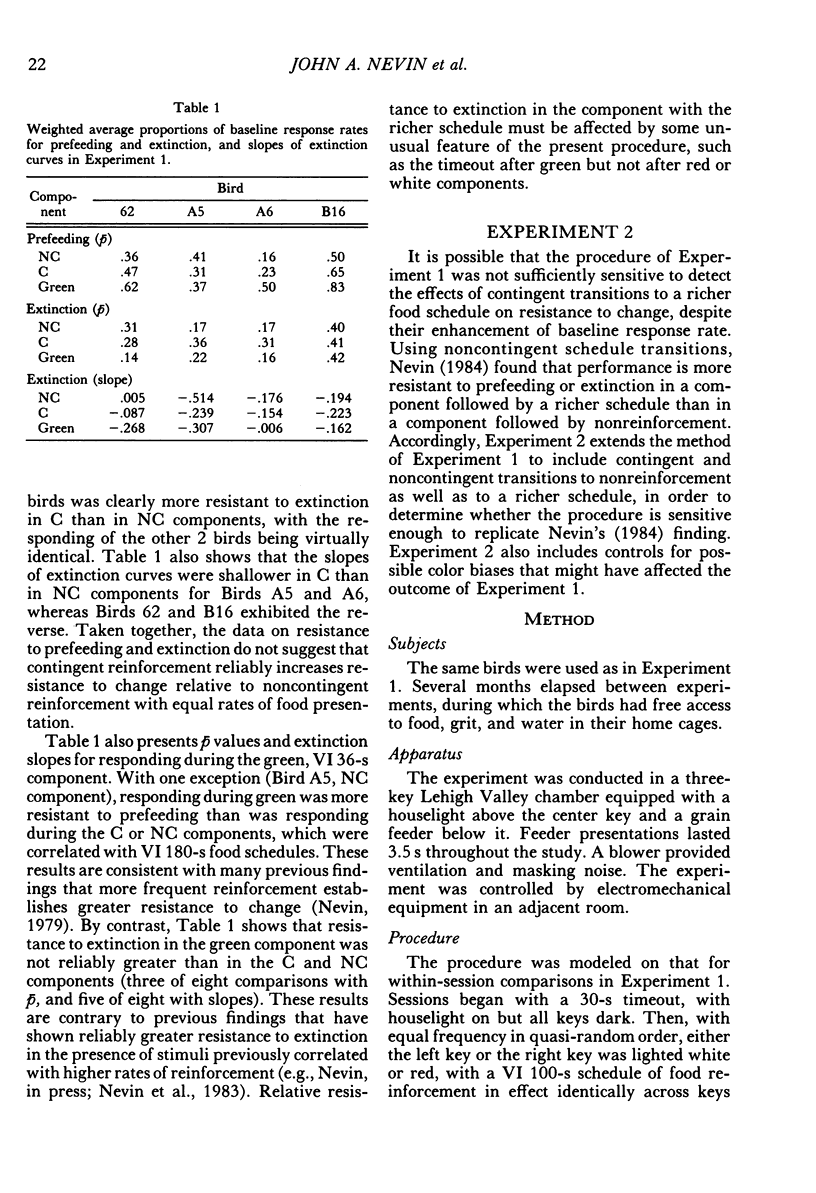
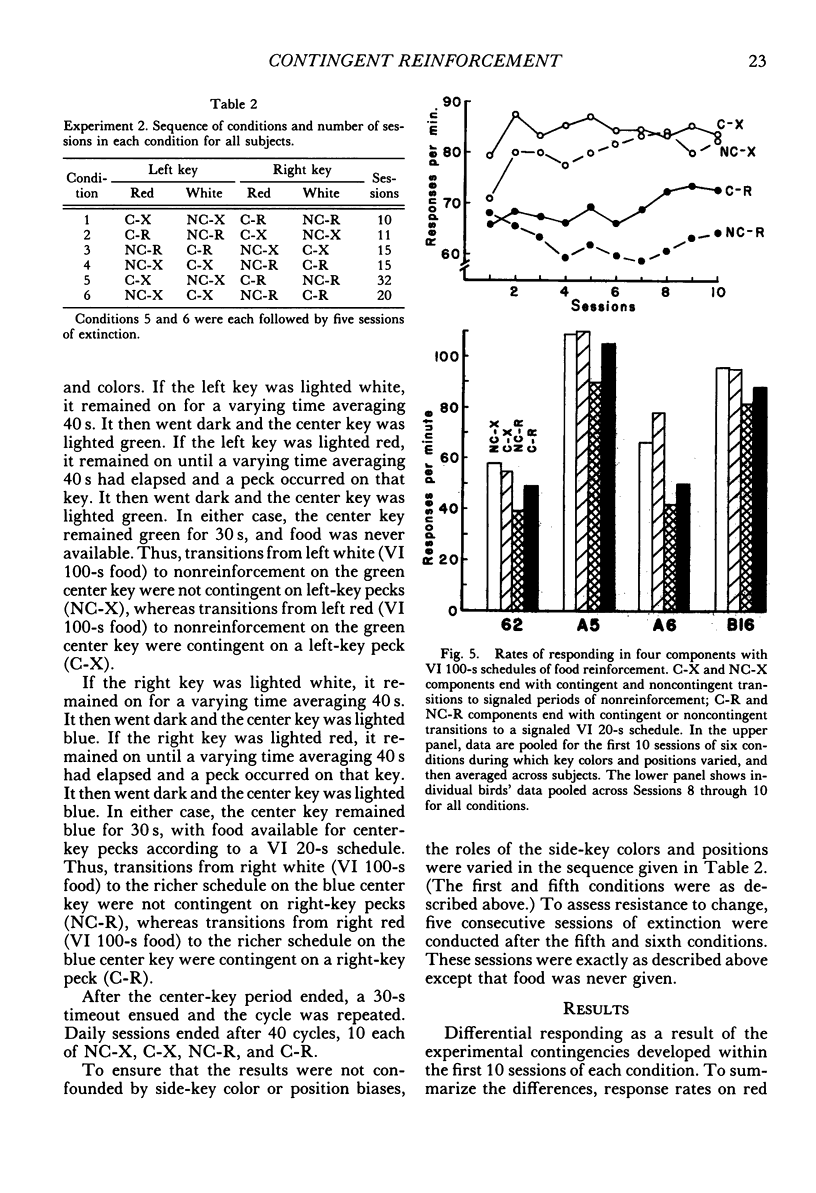
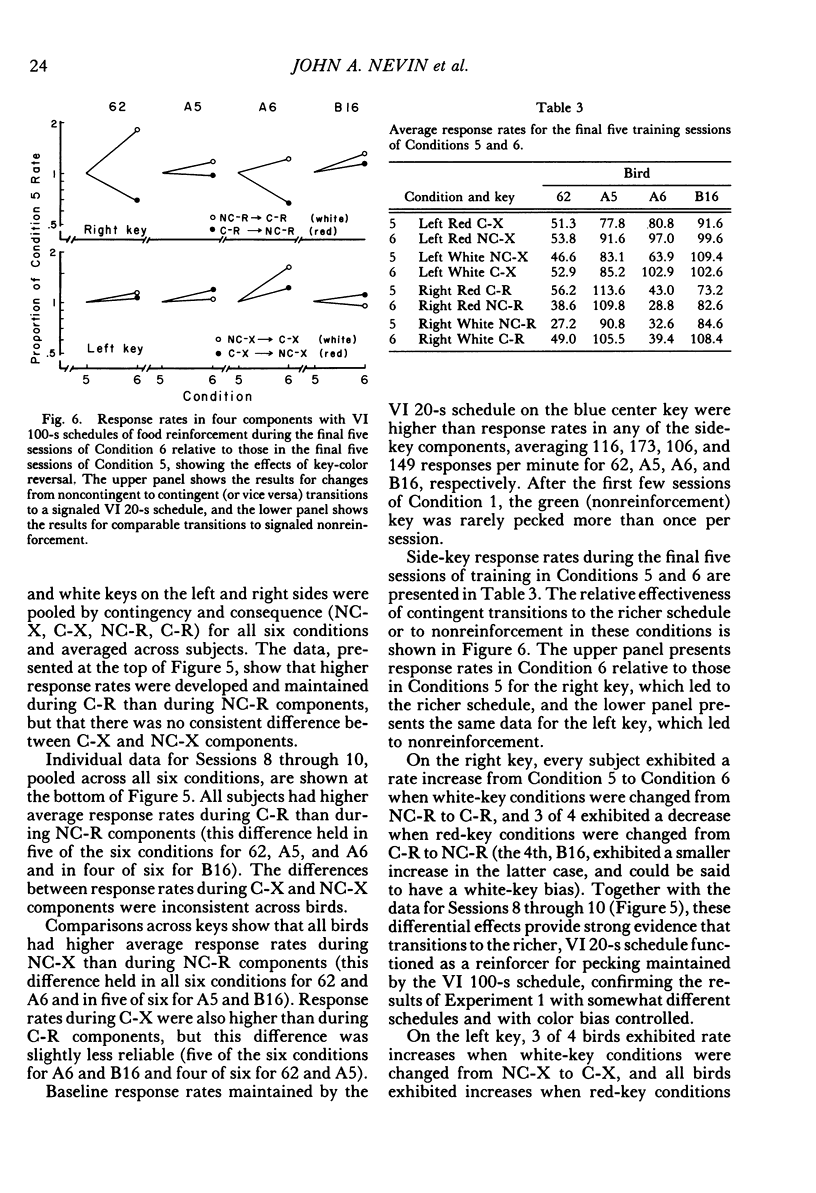
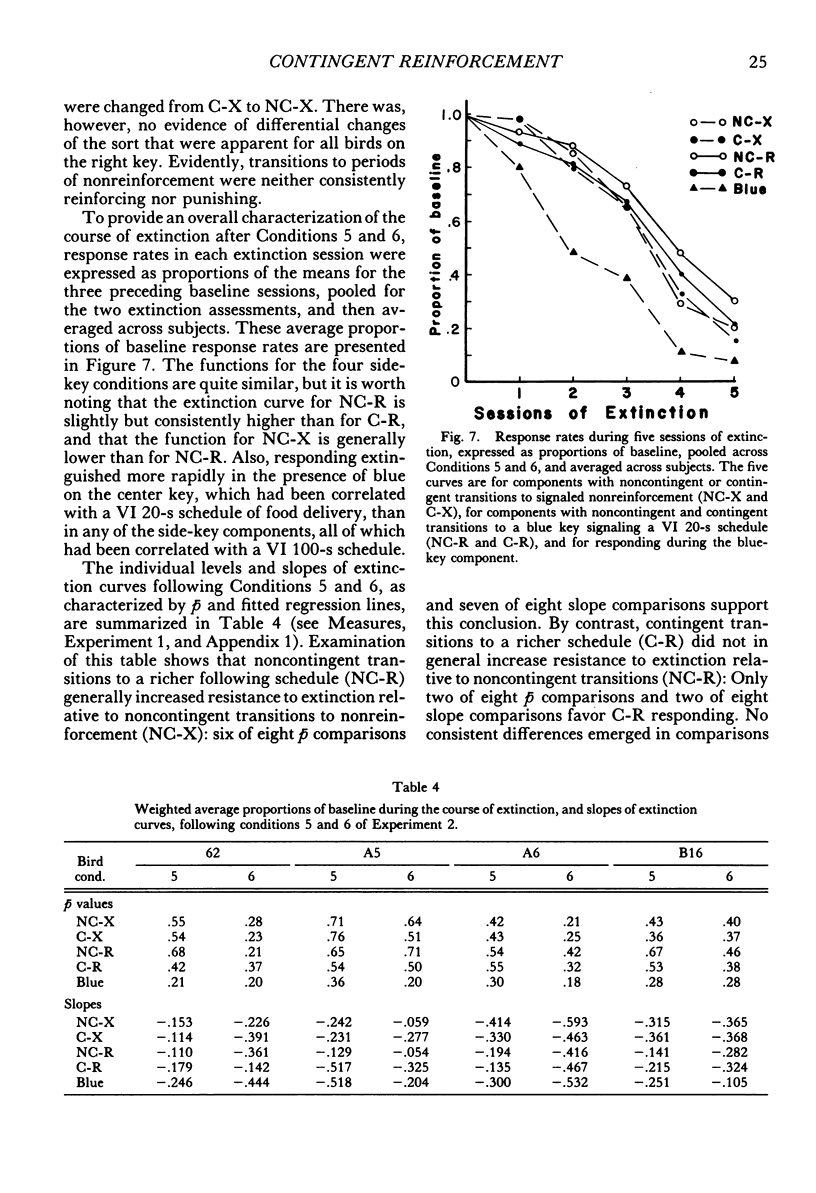
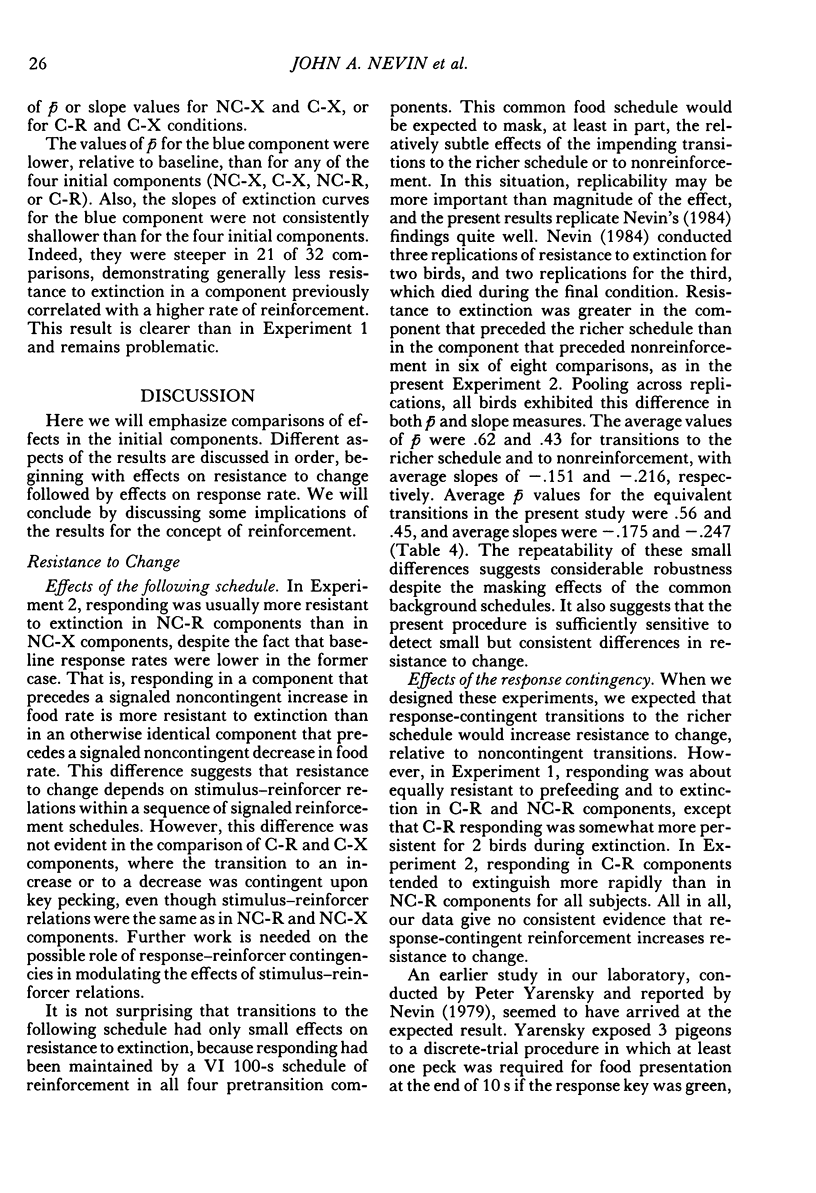
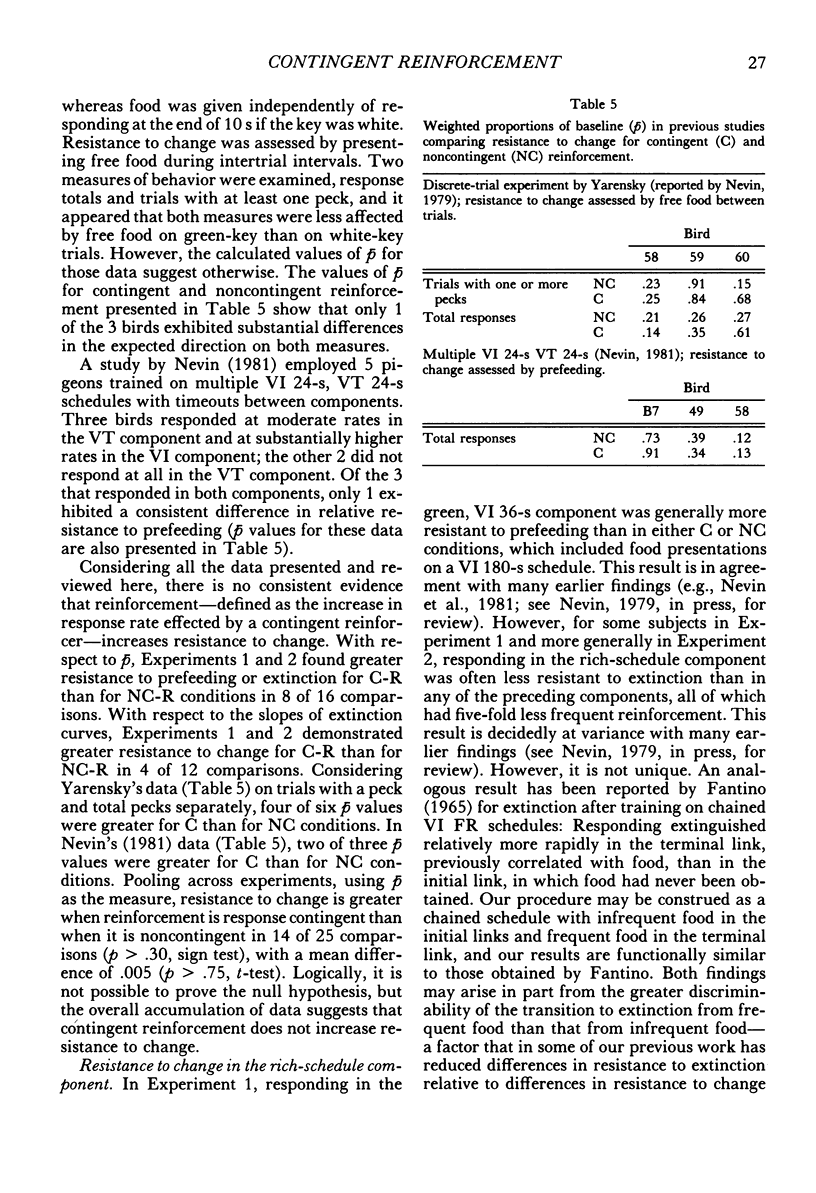
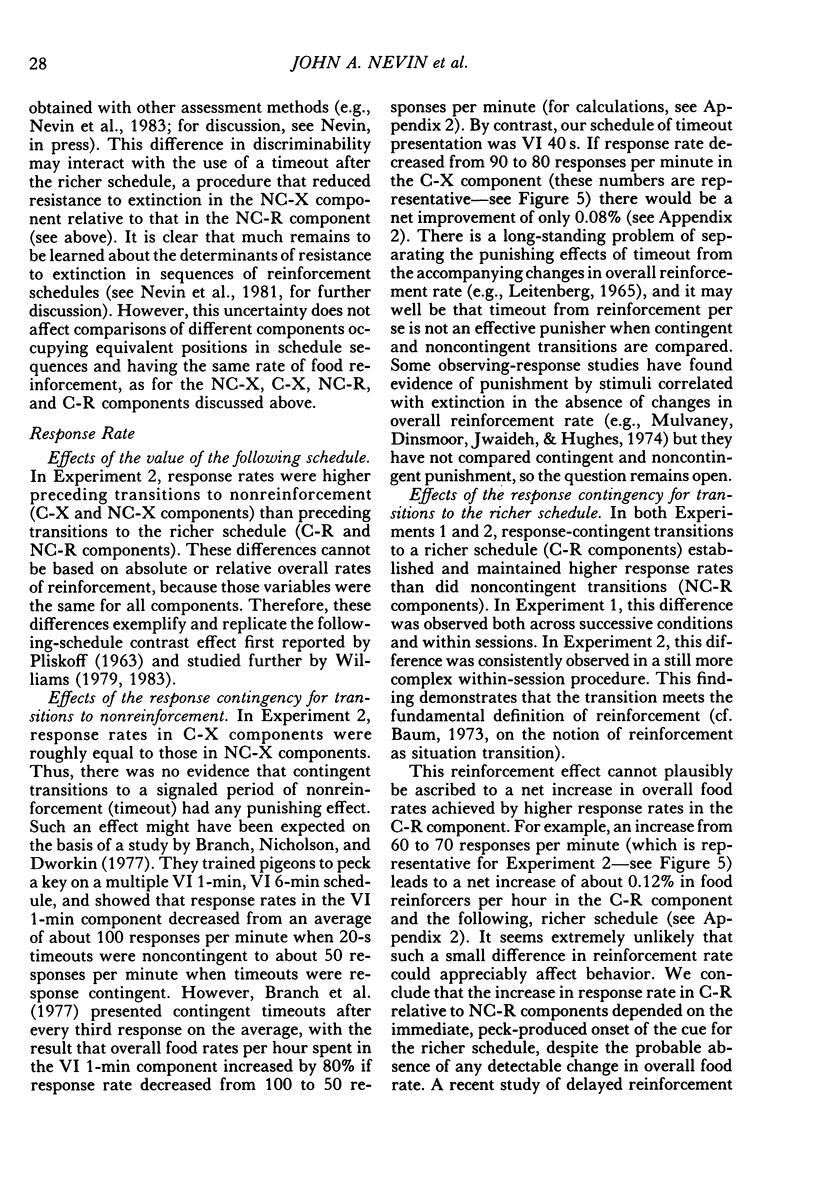
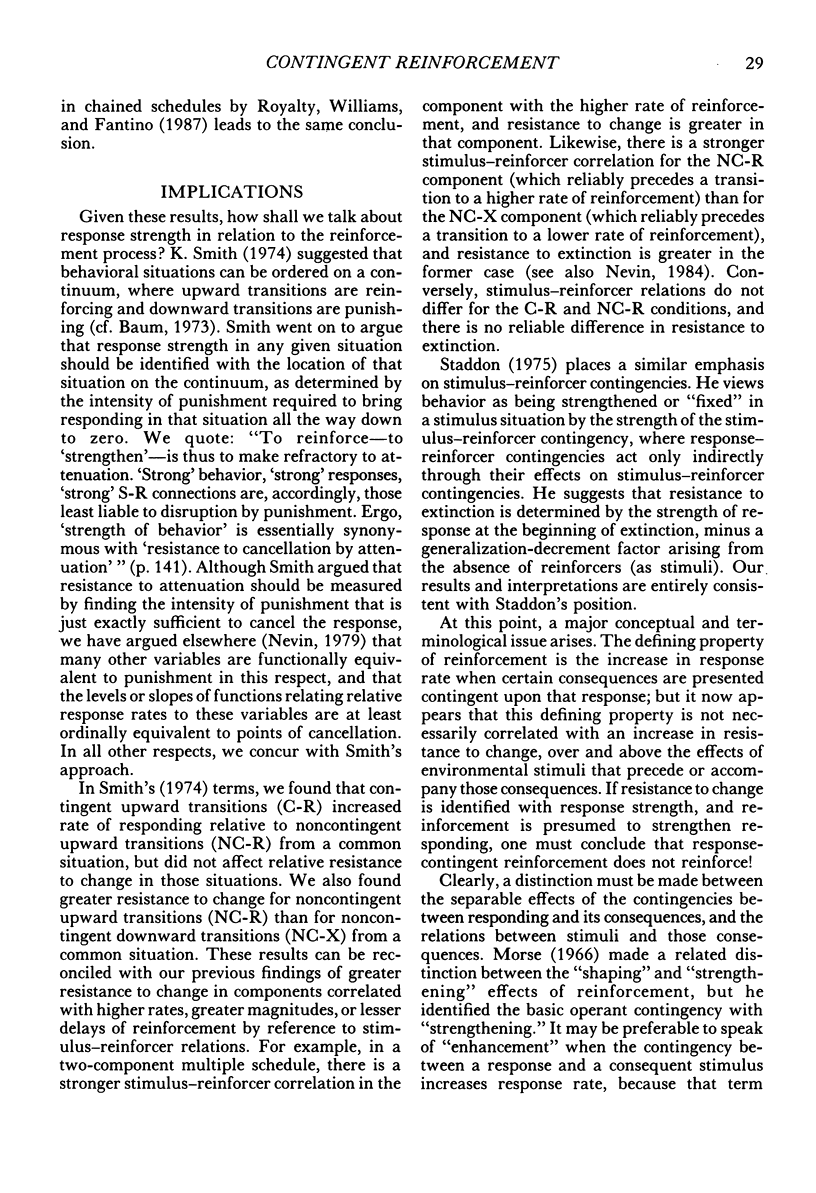
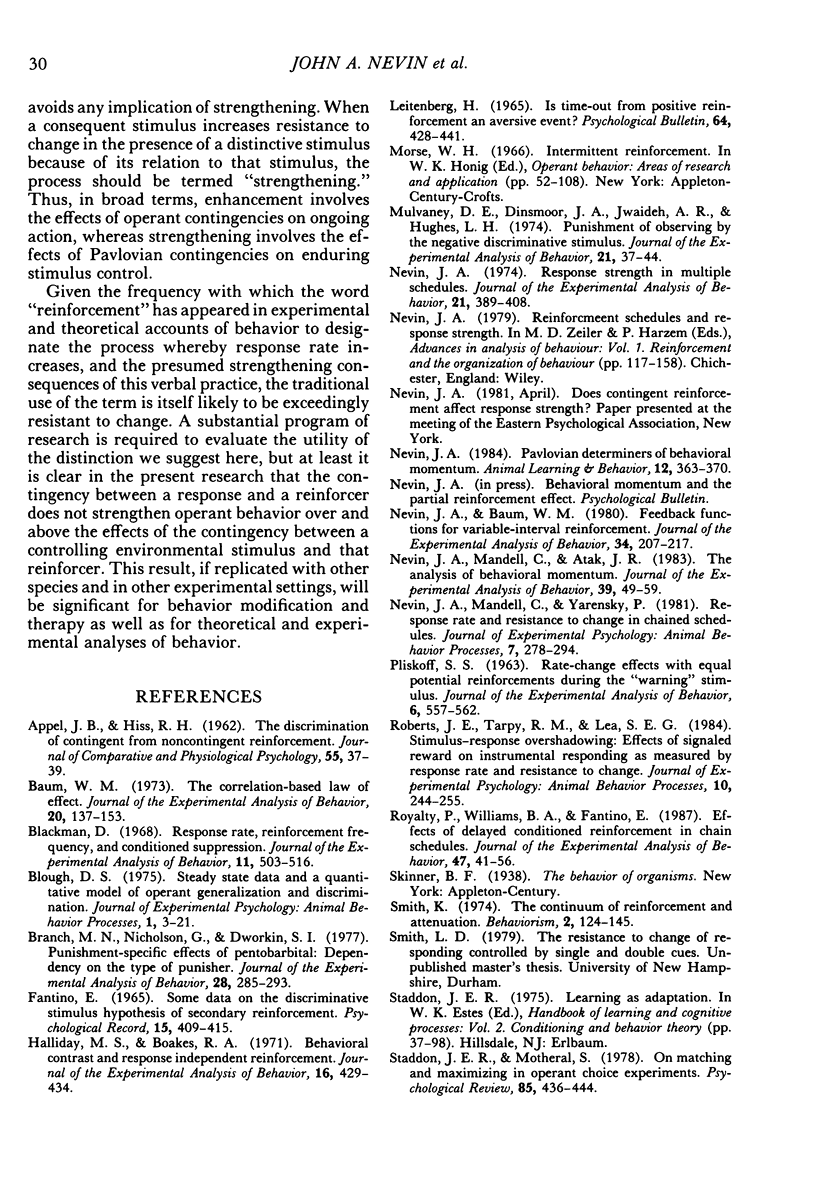
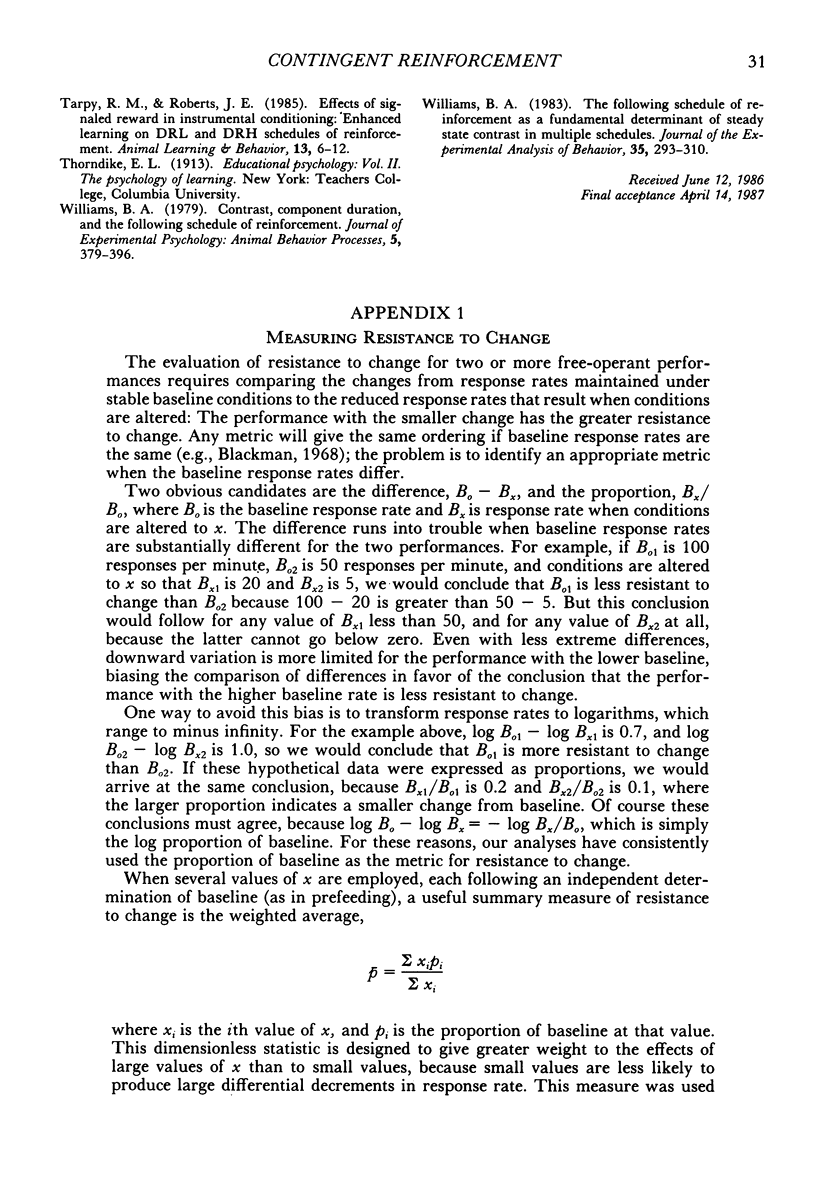
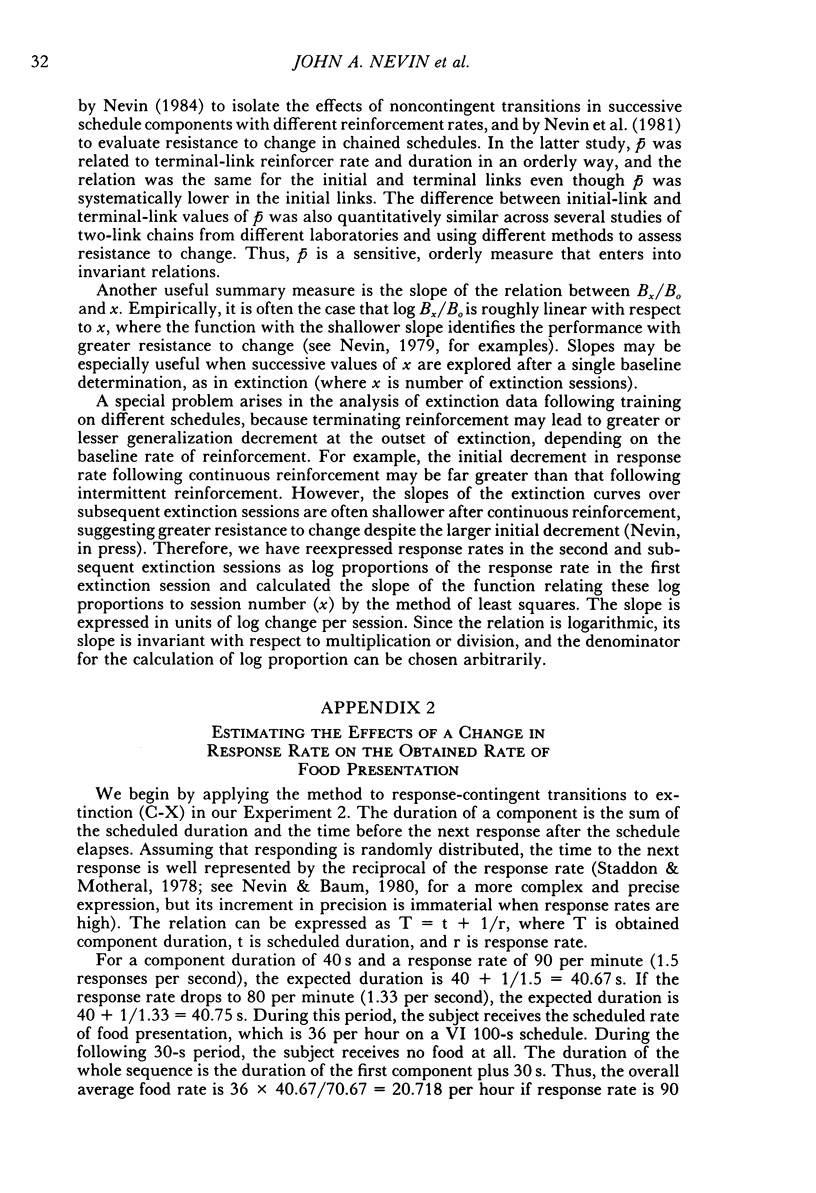
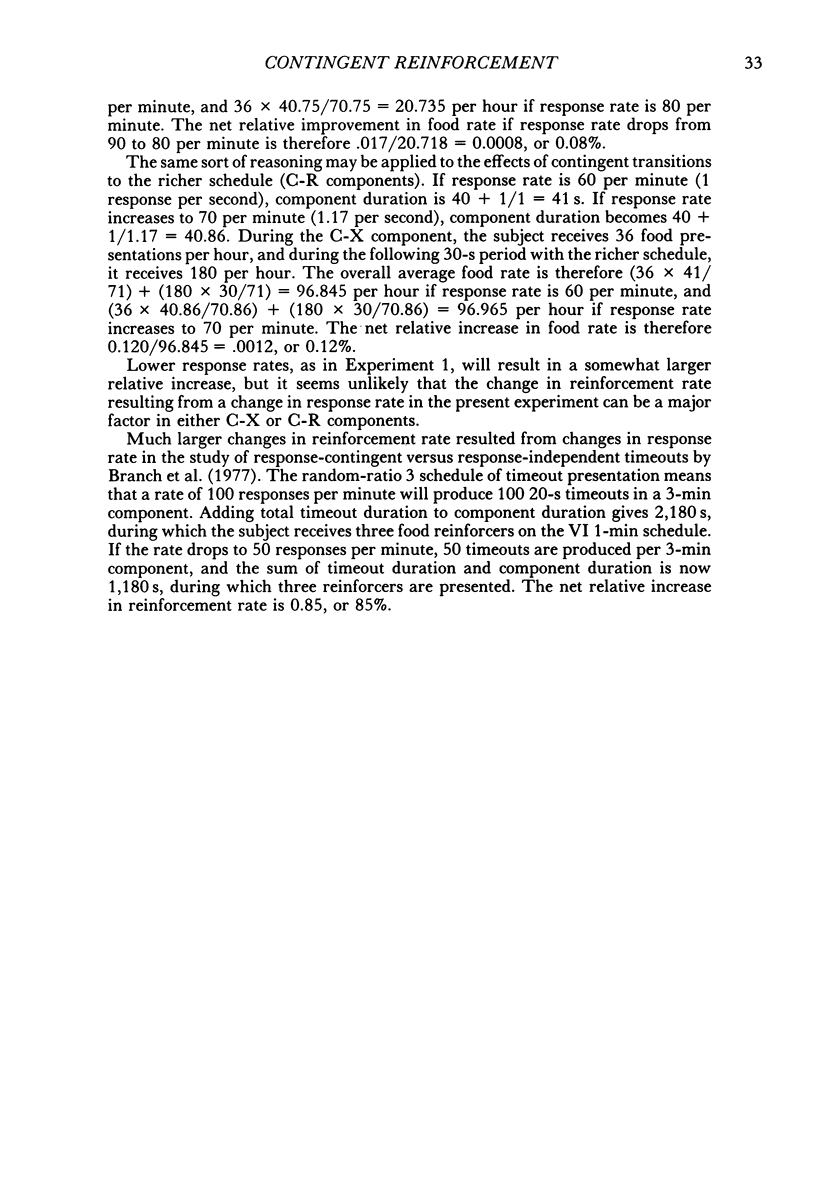
Selected References
These references are in PubMed. This may not be the complete list of references from this article.
- APPEL J. B., HISS R. H. The discrimination of contingent from noncontingent reinforcement. J Comp Physiol Psychol. 1962 Feb;55:37–39. doi: 10.1037/h0044613. [DOI] [PubMed] [Google Scholar]
- Baum W. M. The correlation-based law of effect. J Exp Anal Behav. 1973 Jul;20(1):137–153. doi: 10.1901/jeab.1973.20-137. [DOI] [PMC free article] [PubMed] [Google Scholar]
- Blackman D. Response rate, reinforcement frequency, and conditioned suppression. J Exp Anal Behav. 1968 Sep;11(5):503–516. doi: 10.1901/jeab.1968.11-503. [DOI] [PMC free article] [PubMed] [Google Scholar]
- Branch M. N., Nicholson G., Dworkin S. I. Punishment-specific effects of pentobarbital: dependency on the type of punisher. J Exp Anal Behav. 1977 Nov;28(3):285–293. doi: 10.1901/jeab.1977.28-285. [DOI] [PMC free article] [PubMed] [Google Scholar]
- Halliday M. S., Boakes R. A. Behavioral contrast and response independent reinforcement. J Exp Anal Behav. 1971 Nov;16(3):429–434. doi: 10.1901/jeab.1971.16-429. [DOI] [PMC free article] [PubMed] [Google Scholar]
- Leitenberg H. Is time-out from positive reinforcement an aversive event? A review of the experimental evidence. Psychol Bull. 1965 Dec;64(6):428–441. doi: 10.1037/h0022657. [DOI] [PubMed] [Google Scholar]
- Mulvaney D. E., Dinsmoor J. A., Jwaideh A. R., Hughes L. H. Punishment of observing by the negative discriminative stimulus. J Exp Anal Behav. 1974 Jan;21(1):37–44. doi: 10.1901/jeab.1974.21-37. [DOI] [PMC free article] [PubMed] [Google Scholar]
- Nevin J. A., Baum W. M. Feedback functions for variable-interval reinforcement. J Exp Anal Behav. 1980 Sep;34(2):207–217. doi: 10.1901/jeab.1980.34-207. [DOI] [PMC free article] [PubMed] [Google Scholar]
- Nevin J. A., Mandell C., Atak J. R. The analysis of behavioral momentum. J Exp Anal Behav. 1983 Jan;39(1):49–59. doi: 10.1901/jeab.1983.39-49. [DOI] [PMC free article] [PubMed] [Google Scholar]
- Nevin J. A. Response strength in multiple schedules. J Exp Anal Behav. 1974 May;21(3):389–408. doi: 10.1901/jeab.1974.21-389. [DOI] [PMC free article] [PubMed] [Google Scholar]
- PLISKOFF S. S. RATE-CHANGE EFFECTS WITH EQUAL POTENTIAL REINFORCEMENTS DURING THE "WARNING" STIMULUS. J Exp Anal Behav. 1963 Oct;6:557–562. doi: 10.1901/jeab.1963.6-557. [DOI] [PMC free article] [PubMed] [Google Scholar]
- Royalty P., Williams B. A., Fantino E. Effects of delayed conditioned reinforcement in chain schedules. J Exp Anal Behav. 1987 Jan;47(1):41–56. doi: 10.1901/jeab.1987.47-41. [DOI] [PMC free article] [PubMed] [Google Scholar]
- Williams B. A. Contrast, component duration, and the following schedule of reinforcement. J Exp Psychol Anim Behav Process. 1979 Oct;5(4):379–396. doi: 10.1037//0097-7403.5.4.379. [DOI] [PubMed] [Google Scholar]
- Williams B. A. The following schedule of reinforcement as a fundamental determinant of steady state contrast in multiple schedules. J Exp Anal Behav. 1981 May;35(3):293–310. doi: 10.1901/jeab.1981.35-293. [DOI] [PMC free article] [PubMed] [Google Scholar]


